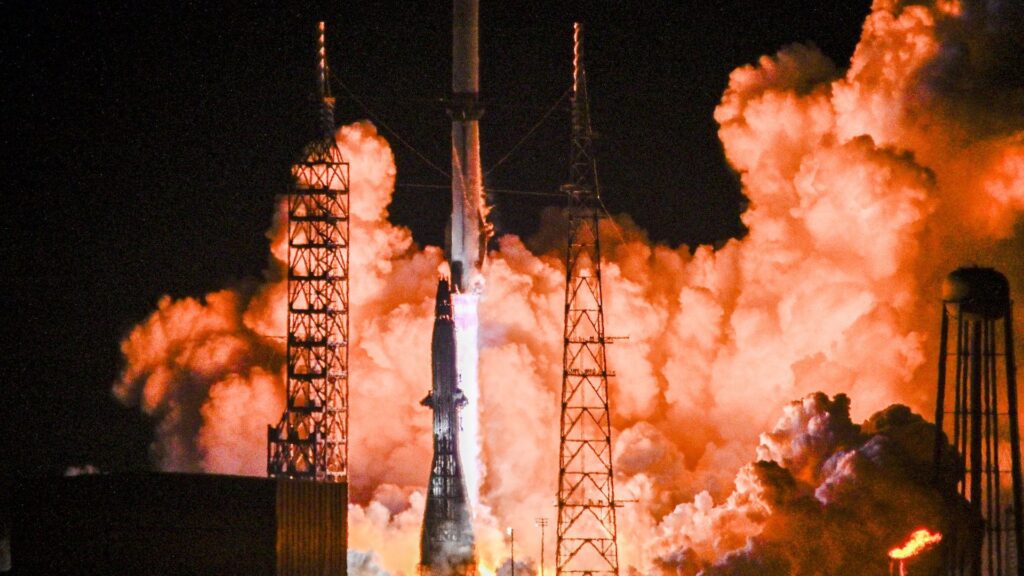Refresh
Do ultraprocessed foods raise colon cancer risk?

Eating more ultraprocessed food has been linked to a higher risk of polyps, or precancerous lesions that can lead to colon cancer, The Guardian reported. That’s according to new research that drew data from a large study of female nurses in the U.S.
The study authors suggest this link may partly explain a rise in colon cancer among young women, but in my mind, the case isn’t closed. It’s true that the rates of certain cancers have been rising in younger people — and colon cancer is one of them.
But it’s devilishly difficult to tease apart cause and effect for cancer, which is caused by myriad factors and can take decades to develop. And there have been a number of other hypotheses for the rise in colon cancer risk, including a toxin produced by gut bacteria, rising obesity rates, and antibiotic usage, our health editor Nicoletta previously reported.
Adding to the confusion, there’s not a single, agreed-upon definition for an ultraprocessed food — and emerging research suggests that there may be differences in the health harms of, say, yogurt versus soda.
Liftoff!

In a historic launch, Blue Origin’s New Glenn rocket lifted off from Cape Canaveral Space Force Station at 3:56 p.m. EST, carrying a payload of NASA equipment bound for Mars.
Riding aboard the rocket are NASA’s ESCAPADE spacecraft — a pair of twin satellites that will orbit Mars in order to study the effects of solar weather on the Red Planet’s atmosphere. The mission will hopefully help scientists determine how Mars lost much of its atmosphere in the ancient past.
This was the second launch of the 321-foot-tall (98 meters) New Glenn rocket, which completed its first mission in January.
Watch Blue Origin rocket launch live
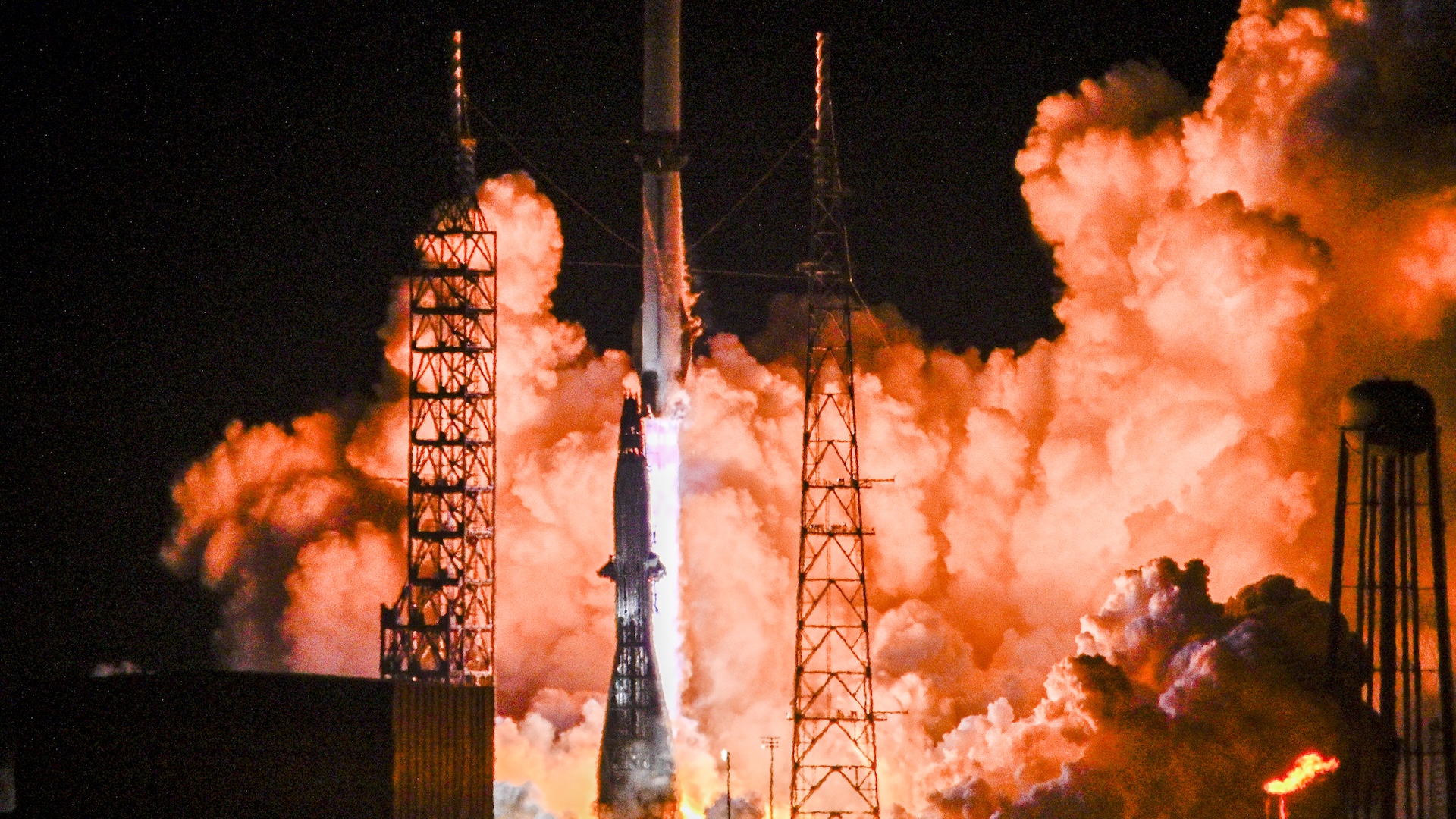
Jeff Bezos’ space exploration company Blue Origin is finally getting a crack at its delayed space launch. Everything is go for the 321-foot-tall (98-meters) rocket, which had previous launches scrubbed due to technical glitches and poor weather — both in space and on Earth.
The rocket is set to launch in just a few minutes, during an 88-minute-window that opens at 2:57 EST, Spaceflightnow reports.
Live Science sister site Space.com is streaming the launch live.
See the ‘other’ comet ATLAS break apart

Striking new images show the “other” Comet ATLAS (C/2025 K1) breaking apart.
Scientists initially thought the comet, which is unrelated to the interstellar comet 3I/ATLAS, survived its recent close approach to the sun. But the new images, from The Virtual Telescope project, show that isn’t so.
The cause of its disintegration remains somewhat unclear, Ben reported. You can read all about the other ATLAS’s demise — and how we know it really happened — in the full story here.
Space trash bag for asteroid mining?
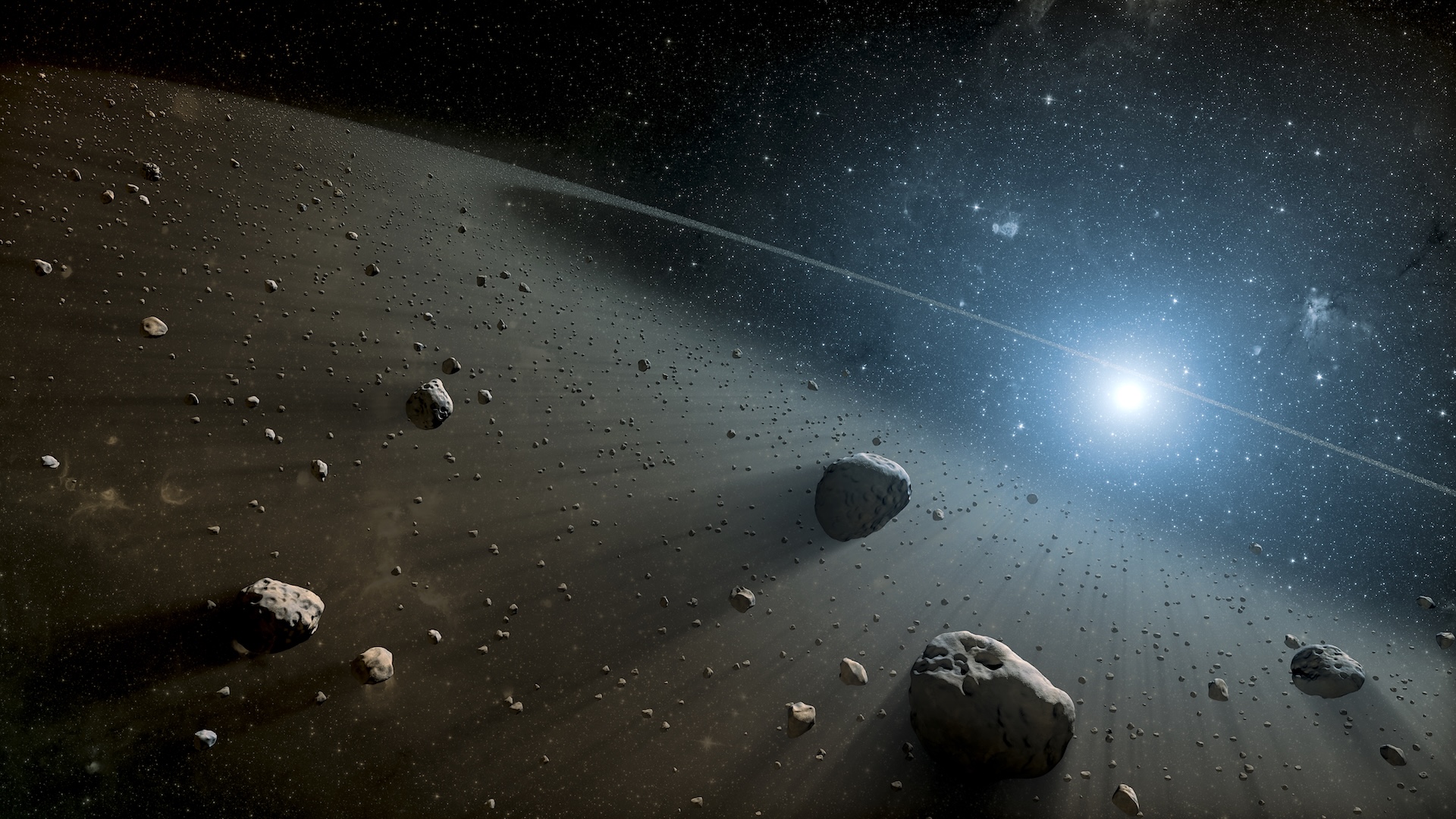
Tia here with news that a startup wants to collect asteroids and space junk in giant, inflatable trash bags. Asteroids are rich in valuable metals, so in theory, scooping these up could provide a way to turn space trash into space treasure, CNN reports.
The startup, TransAstra, has tested a mini-prototype of its “CaptureBag,” and says the company is now aiming to test a bigger version.
But how feasible is it? And is this the only solution to space junk?
Live Science senior writer Harry Baker previously wrote about another effort to capture space junk— hoovering them up with a tractor beam.
You can read about those tractor beams here.

Tia Ghose
Signing off
That’s me signing off for the day. It’s over to Tia for more updates from our U.S. team. Until tomorrow!
Blast Blasted Blubber
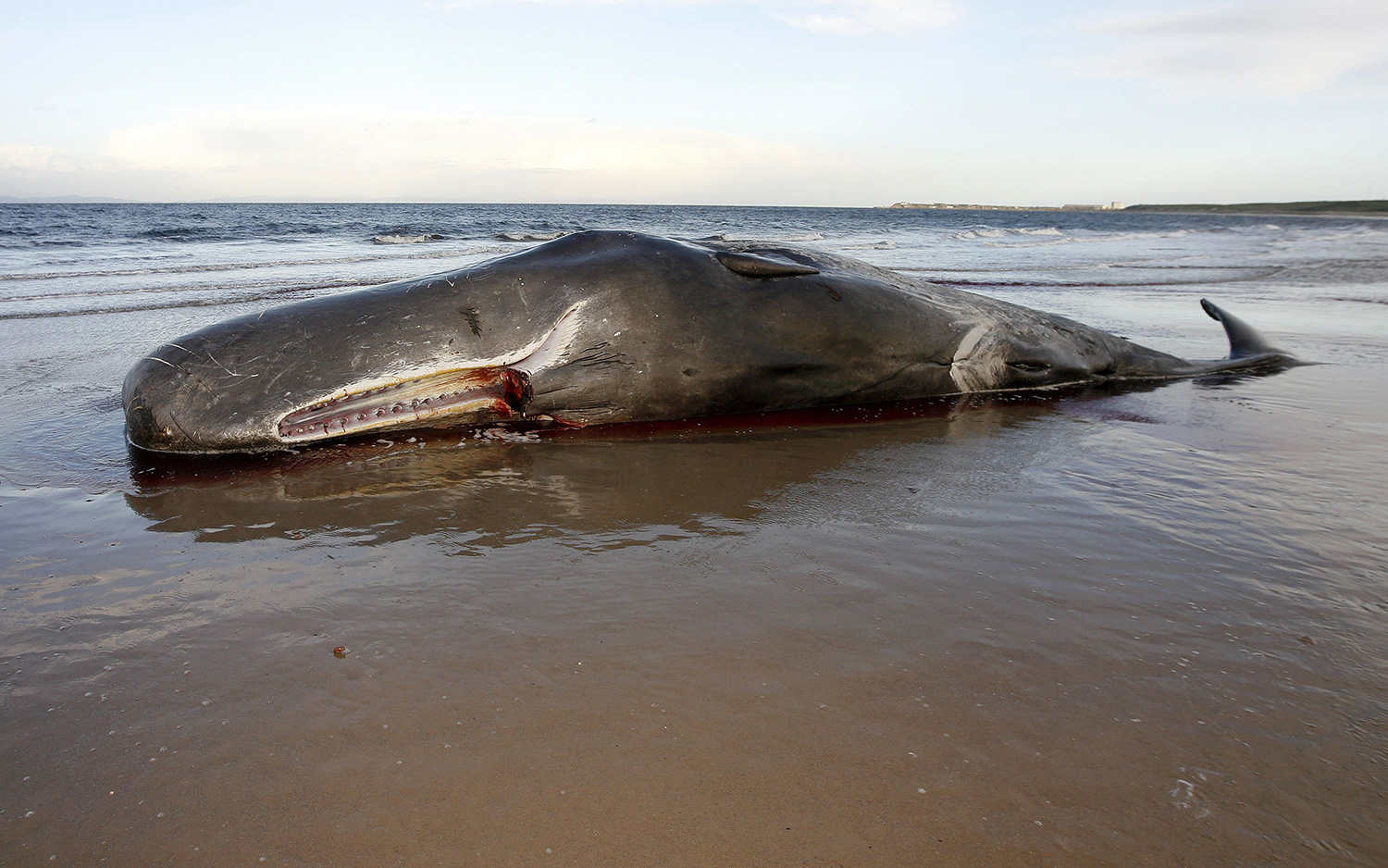
A bit of unbelieve-blubble science history for you now. On this day, 55 years ago on the Oregon Coast, state officials decided to dynamite the carcass of a beached sperm whale (Physeter macrocephalus) to remove it from the shore of the coastal town of Florence.
The result was pure carnage, retired Oregon Coast reporter Larry Bacon told Oregon Public Broadcasting.
“All of a sudden there was this hundred-foot geyser of blood, blubber and sand going up into the sky,” Bacon said. “It was like a blubber snowstorm with tiny particles of blubber floating down after the big chunks.”
Witnessing the spectacle also gave KATU-TV reporter Paul Linman inspiration for one of the greatest alliterations ever broadcast, when he said that “the blast blasted blubber beyond all believable bounds.”
If you want more suitably melancholic reporting on cetacean beachings, check out this FT Weekend Magazine longread on why encountering stranded whales can be so profoundly affecting (warning: it’s paywalled).

Ben Turner
Super hurricane threat is growing

The Caribbean is facing a growing threat from super hurricanes, meteorologist Jeff Masters writes for Yale Climate Connections. It’s an issue we’ve encountered again and again in our reporting, as climate change causes hurricanes like Melissa to grow stronger, do so faster, and become ever more dangerous than before.
In fact, recent hurricane seasons have led some scientists to suggest that we may need to introduce an extra Category 6 to capture the destructiveness of some of these superstorms, as Sascha wrote about in this story.
Where My Country Gone?
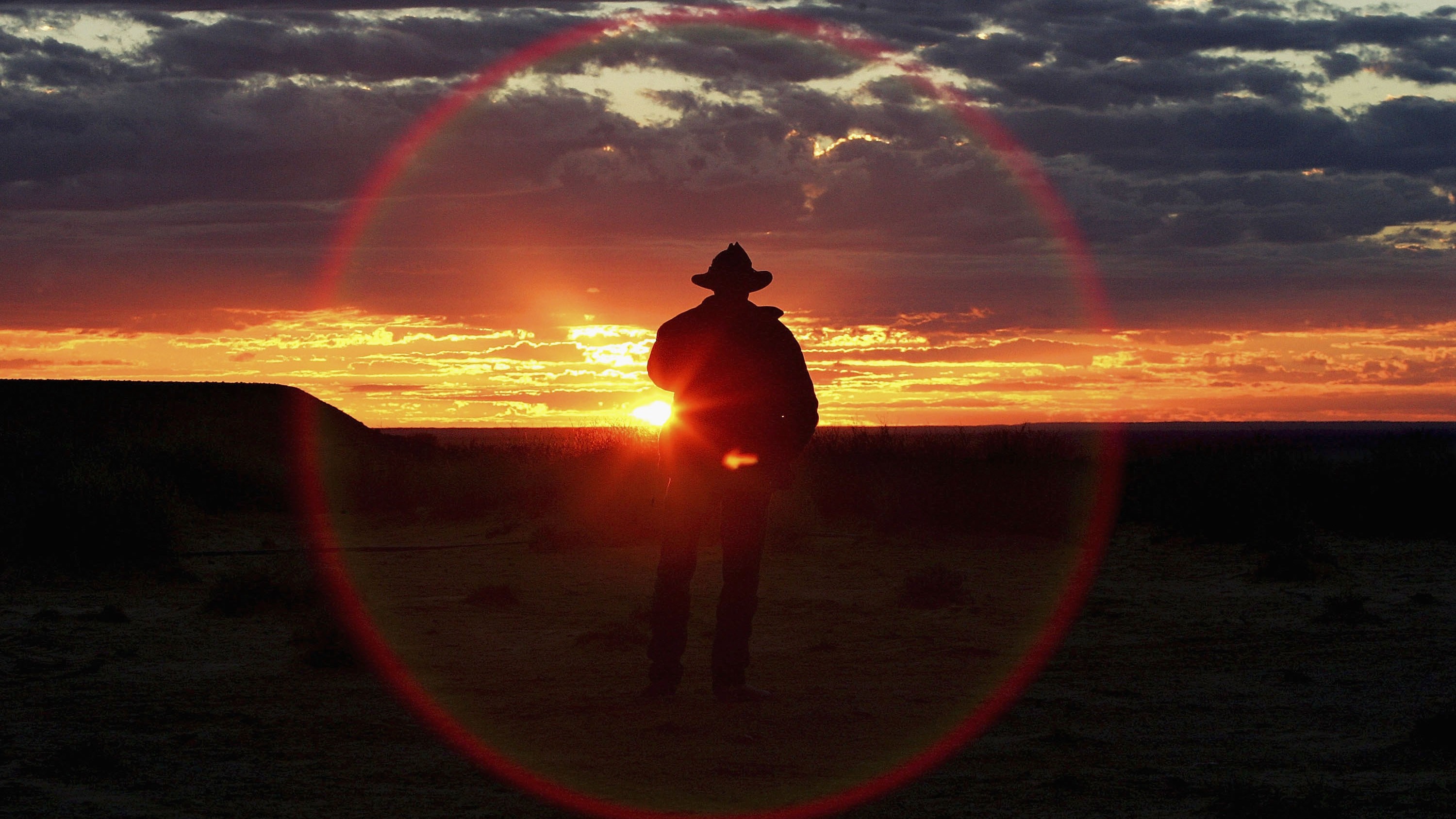
Sorry to Patrick, the good people of Birmingham, and British bronze bull sculptors — but New York did it better.
While we’re on the topic of imitation, did you see who’s at the top of Billboard’s Country Singles chart? His name is Breaking Rust, his song is “Walk My Walk”, and he’s not real.
Artificial intelligence (AI) generated music is finally breaking into the mainstream, as this New Yorker article details. It turns out that humans are actually pretty bad at telling whether something is a chatbot or another person, and the same rule seems to apply to music too — with one recent survey showing that 97% of human listeners cannot tell the difference between human-made or synthetic songs.
It’s probably not great news if you’re a fan of human creativity, but I can’t help but suspect a confounding factor in that so much popular music is fairly formulaic anyway.

Ben Turner
Day 2 at SVP
Unfortunately, a lot of that research is under embargo, which means that I’m not allowed to tell you about it yet.
But there are some things I can say. For example, have you ever heard of a “Hell Pig”? They’re from the genus Archaeotherium, which were extinct North American mammals that looked like pigs (the pig part) with the larger species appearing to have crushed bones with their teeth (the hell part).
The embargoes mean that taking pictures inside the conference is tricky, so here’s a photo of Birmingham’s famous ‘Brummie the Bull’, which I didn’t take, because the bull is a 17-minute walk from the conference centre, and that seemed too far for a photo.


Patrick Pester
New Glenn, again again
Blue Origin’s New Glenn rocket is targeting yet another launch window today, this time between 2:57 p.m. to 4:25 p.m. EST. Extreme space weather stopped it last time, Earth weather the time before. Will it be third time lucky for Jeff Bezos’s historic launch and the NASA mission on board?
NG-2 Update: We are scheduled to launch tomorrow, November 13, with a launch window from 2:57–4:25 PM EST / 19:57–21:25 UTC. The live webcast starts here at T-20 minutes. pic.twitter.com/Dp9uqykdzANovember 13, 2025
Northern delights
The weather in space had better calm down before I run out of puns (I’m already dipping into my worst). A trio of solar outbursts blanketed the Northern Hemisphere with curtains of shimmering auroras last night, making for some stunning photos.
If you took any good photos you’d like to share, drop us an email here
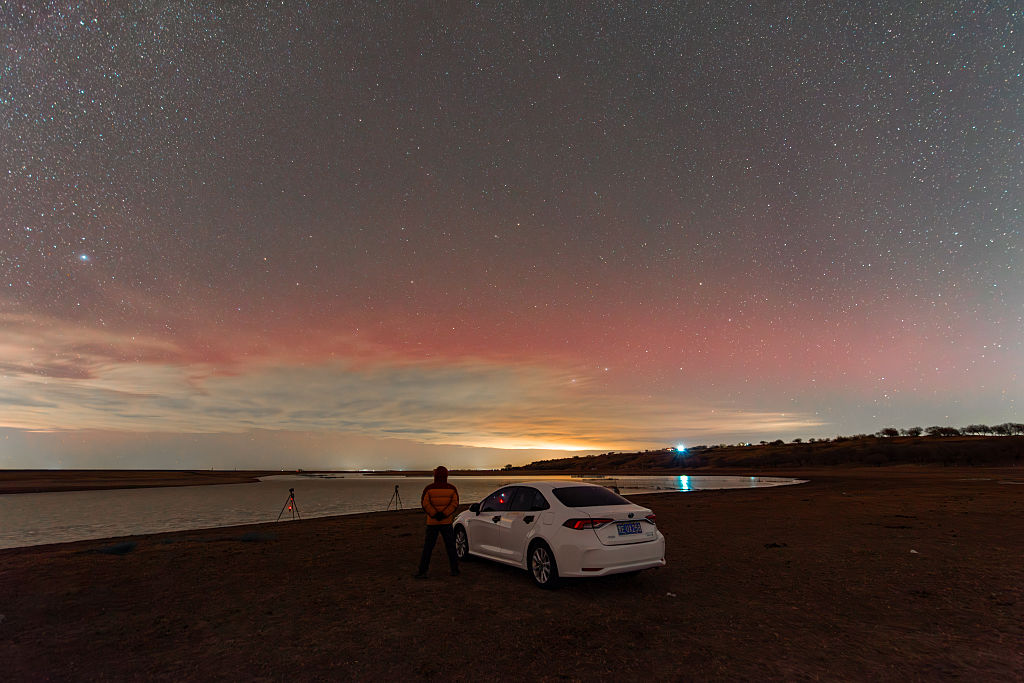
China’s stranded astronauts could be home by Friday
Good morning science fans. We’re back again with news that China could be close to returning its astronauts, stranded in the Tiangong space station after a space debris incident last week.
I wrote a story on preparations for their return last night. Now, an aerospace closure issued around Inner Mongolia’s Dongfeng site for the early hours of the morning EST on Friday (Nov. 14) could hint at an imminent return — if not of the astronauts themselves, then at least of their potentially faulty Shenzhou-20 return capsule.
More news on this as we get it. In the meantime, check out this story on the growing problem of overcrowding in Earth’s orbit and this on the first-of-a-kind instance of space cooperation between China and the U.S. to avoid a potential satellite collision.


Ben Turner
Famous star cluster is upgraded
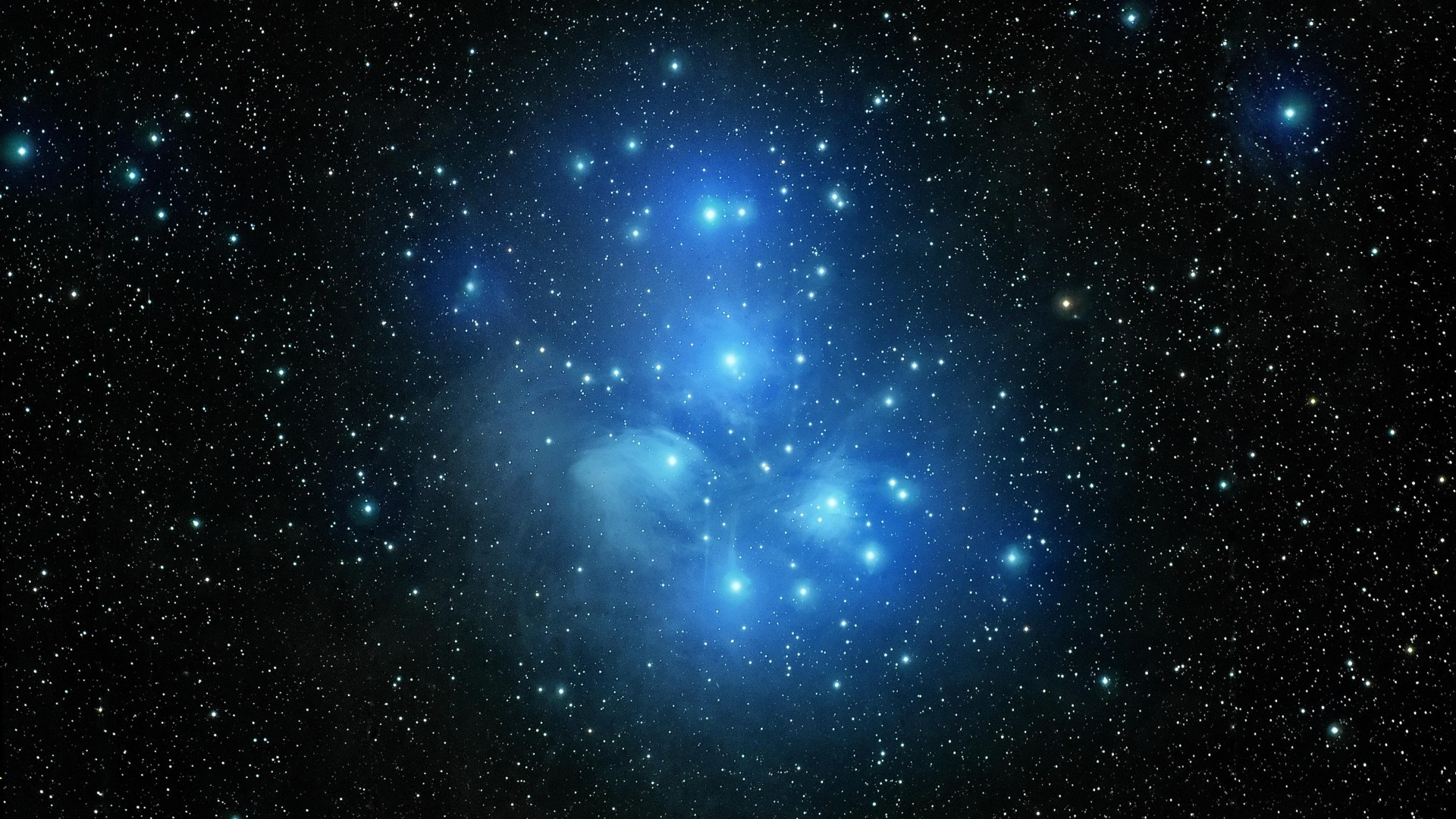
The Pleiades, also known as the Seven Sisters, seems to have way more siblings than we thought.
Astronomers used data on star spin velocity from the Gaia and TESS space telescopes to determine the famous star cluster is actually 20 times bigger than we thought, containing thousands of fainter stars lurking among the brightest seven. The new method could reveal hidden stellar families and complex structures linking stars that were once thought to be independent, researchers say.
Similar data could also be used to reveal whether our own sun is part of an extended stellar family, Space.com reported.


There’s some bad news for the prospect of life outside our solar system: scientists say they’ve spotted a dwarf star about 40 light-years from Earth belching out an ultrapowerful coronal mass ejection (CME).
That monster blast of plasma was powerful enough to rip the atmosphere off any planets that happened to be orbiting the star. Stars like these, called M-dwarfs, are dimmer than the sun, which means their habitable zones are much closer. And yet, this class of star is also more volatile, meaning any planet that could harbor life would be regularly lashed by punishing solar flares. Whether life could evolve — and survive — on such a planet is uncertain.
Of course, there are many other solar systems that could harbor life, so the search for extraterrestrials isn’t over yet. But the new detection may mean the most common type of star in the Milky Way is less hospitable to life than we thought.
You can read more about the violent CME here.

Volcano off Oregon won’t erupt this year, scientists say
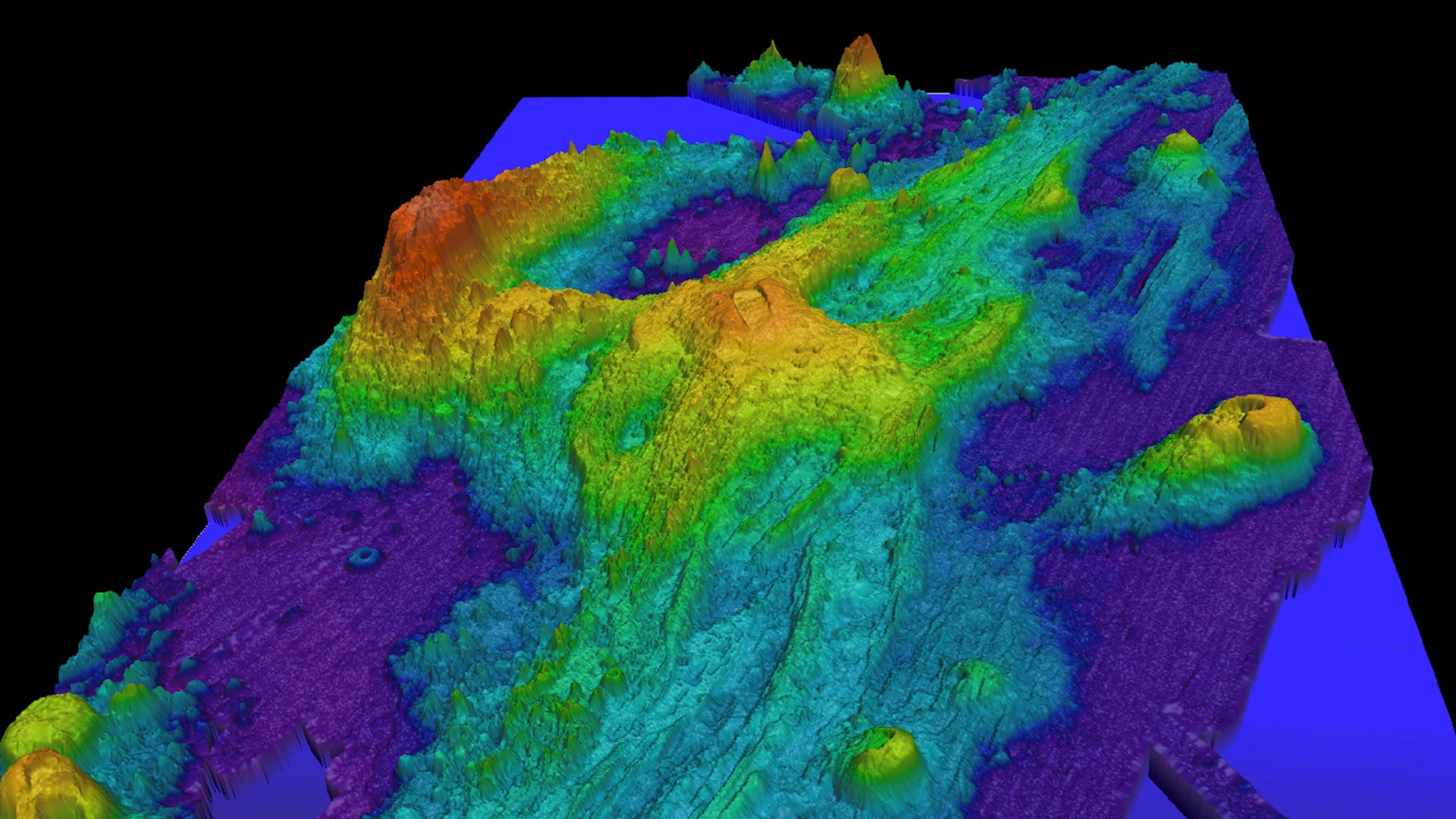
This past year, news outlets, including Live Science, widely reported that the Axial Seamount off Oregon’s coast would likely erupt this year. Now, geologists have said an eruption is unlikely at least until 2026.
The seamount has already erupted three times: in 1998, 2011 and 2015, staff writer Sascha Pare reports. The initial prediction that it would erupt in 2025 was based on its inflation rate, or how fast the chamber beneath the volcano was filling with magma. Geologists thought the volcano would erupt when that inflation rate reached the level seen in 2015. But that inflation rate has now slowed.
Predicting volcanic eruptions is tricky, but a new model that accounts for the underlying physics could make those predictions more reliable, Sascha reports.
You can read the full story here.

Ancient people in Japan had almost no Denisovan DNA

One of the biggest unanswered questions in anthropology is how the Denisovans, mysterious human relatives that lived in Asia and died out around 30,000 years ago, fit into our tangled family tree.
New research is providing tantalizing clues, staff writer Sophie Berdugo reports. Researchers looked at ancient skeletons from Asia that were between 45,000 and 766 years old and found that the prehistoric people of Japan, called the Jomon, had almost no Denisovan DNA.
Modern East Asians have on average about 0.1% Denisovan DNA, but there are wide variations between populations; Papua New Guineans, for example, have up to 5% Denisovan DNA.
So what do the new findings tell us about how Denisovans migrated and mated with Homo sapiens? One possibility is that Denisovans existed at such low numbers that many H. sapiens in Asia never encountered them. Or it’s possible this genetic data tells us something about the routes early human populations took across Asia.
You can read the full story here.

UK bans animal testing
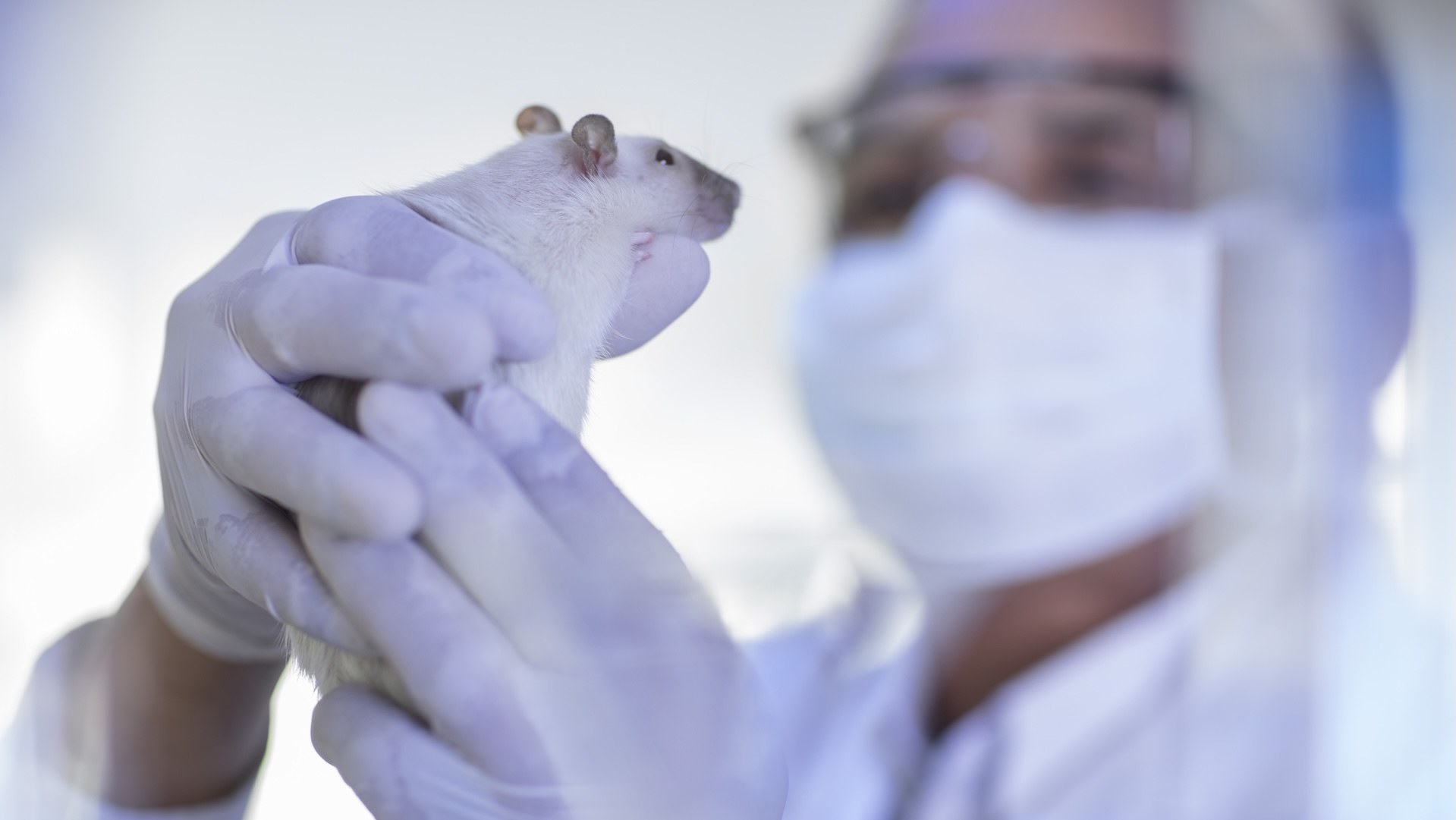
Hi everyone, Tia here with an update that the U.K. has announced it will move to phase out animal testing.
U.K. science minister Lord Patrick Vallance told the BBC that they’ve developed a plan to phase out animal testing for certain safety testing by the end of the year, and to reduce the use of dogs and primates by 35% by 2030. In 2020, about 2.88 million animals were used in testing in the country.
But is that safe, and would it be feasible in the U.S.? In fact, the U.S. already has regulations that set us on a similar path. In 2023, Live Science health editor Nicoletta Lanese reported that the U.S. Food and Drug Administration (FDA) had removed the requirement for animal testing for new drugs.
On paper, that would mean a drug could enter human clinical trials without being tested in animals, but in practice, not much is likely to change soon. That’s because replacements such as computer models of organ systems, and “organs-on-a-chip” are still very new. Before lab rats can be phased out, companies will need to be convinced those alternatives are as good as, or better than, animal testing — and crucially, they’ll need to know that the FDA views those tests as reliable, experts told Lanese.
You can read the full story here.

Farewell, but not goodbye
The UK team are just about ready to slip into our pyjamas and nightcaps now, as we all do on this side of the pond. In the meantime, we’re leaving you in the capable hands of Live Science’s Managing Editor Tia for your updates. See you again tomorrow.
Stranded Shenzhou-20 astronauts are preparing to come home… We just don’t know when yet

We’ve recieved an update from the China Manned Space Agency on preparations to bring its stranded astronauts home. The only hitch is that there’s no word on when yet. Nonetheless, crew and engineers are carrying out tests and drills for an eventual return, so we’ll let you know as soon as we do.
You can read the full story here.

Ben Turner
Blue Origin rocket launch scrubbed
While solar activity has made it a good week for auroras, things aren’t looking so spectacular for Blue Origin, whose mission to launch a pair of Mars-bound NASA spacecraft aboard the New Glenn rocket has been scrubbed for the second time this week. The first time it was because of bad weather on Earth, this time it’s due to bad weather in space.
NG-2 Update: New Glenn is ready to launch. However, due to highly elevated solar activity and its potential effects on the ESCAPADE spacecraft, NASA is postponing launch until space weather conditions improve. We are currently assessing opportunities to establish our next launch…November 12, 2025
There is no indication yet as to when the next launch window will be, but we’ll be keeping an eye out for it. You can read our full report on the mission here.
Doctors achieve the world’s first transatlantic stroke surgery
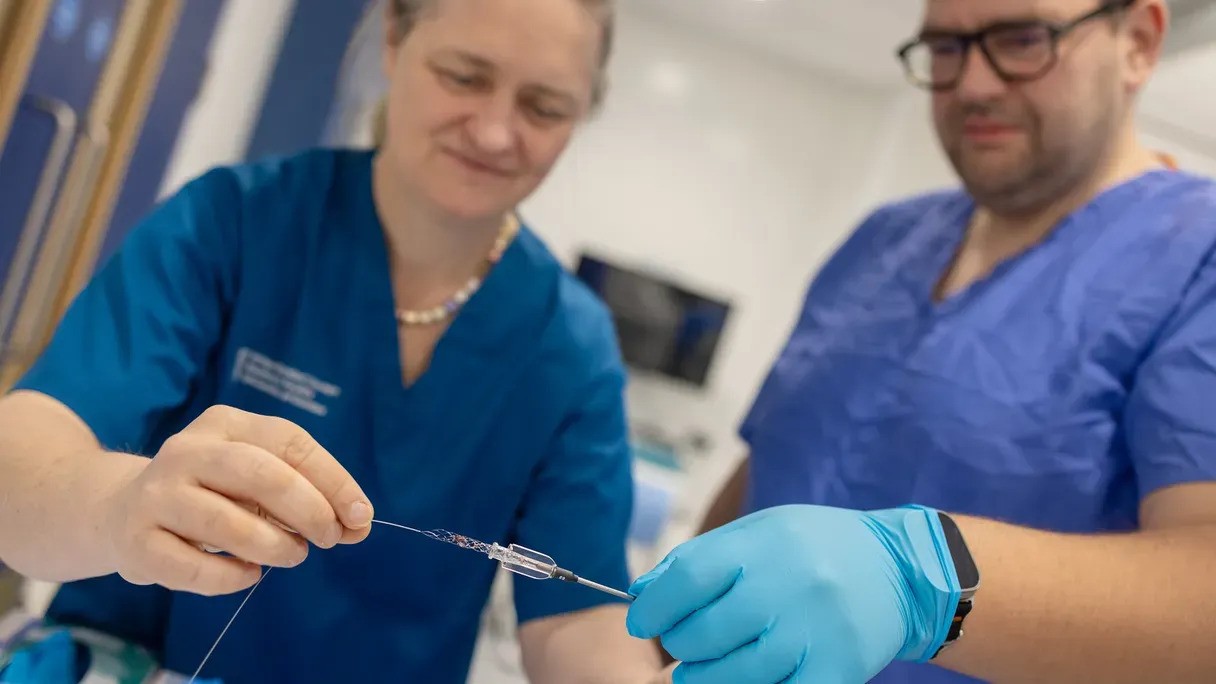
If you can’t get to a doctor where you are, perhaps there’s one all the way across the Atlantic who might soon be able to help. Well, at least some point in the future.
Medical researchers at the University of Dundee in Scotland have performed the world’s first transatlantic thrombectomy (the removal of a blood clot from a blocked blood vessel) by using a joystick connected to a cutting-edge robot located roughly 4,000 miles (6,440 kilometers) away in the Baptist Medical Center in Jacksonville, Florida.
The surgery was performed on a human cadaver, not a live patient, but could open up a path for doctors to save more people who have had ischemic strokes (strokes that block blood supply to the brain) — especially when time is vitally of the essence when it comes to the treatment.

Meta’s chief AI scientist, Yann LeCun, is leaving the company to found his own startup in the coming months, the Financial Times has reported. Described as one of the three “Godfathers of AI”, LeCun received the 2018 Turing Award for his work on deep learning — the field of artificial intelligence that has proved critical to the development of today’s Large Language Models.
LeCun’s departure comes as Meta shifts away from fundamental research into AI and toward building products based on existing technology, Bloomberg reports. His next venture will likely focus on building AIs that use “world models” to take spatial data from the real world and better navigate it.
Africa’s first drug regulation agency launches

Africa is finally getting its own major drug regulator. The African Medicines Agency (AMA), was launched on Monday (Nov. 10) and is headquartered in Kigali, Rwanda.
The agency’s launch is a vital step for Africa, which contains the greatest levels of genetic diversity on the planet yet is often underserved by globally-approved treatments that are less effective or even harmful for some people of African ancestry.
Regulators at the new agency will work at shaping the science conducted to improve the health of the rapidly growing and urbanizing continent.
Check out the full comment by Nature here.

Ben Turner
Aurora galore
As mentioned earlier, the skies over much of the U.S. (and even parts of Mexico) were dazzled by beautiful aurora last night. Did you get a chance to see them? Don’t worry if you were too busy snoozing to poke your head out the window (yep, we get it, it’s cold), our friends over at Space.com just published this jaw-dropping selection of images of last night’s display.
I’ve dropped a few below, but there are plenty more to be found in the article. And if this inspires you to brave the elements with your camera next time, you won’t have to wait long — the aurora should be in full flow tonight.
Northern lights visible from Florida’s Space Coast!!! pic.twitter.com/H8myGLhKbONovember 12, 2025

Live from the SVP
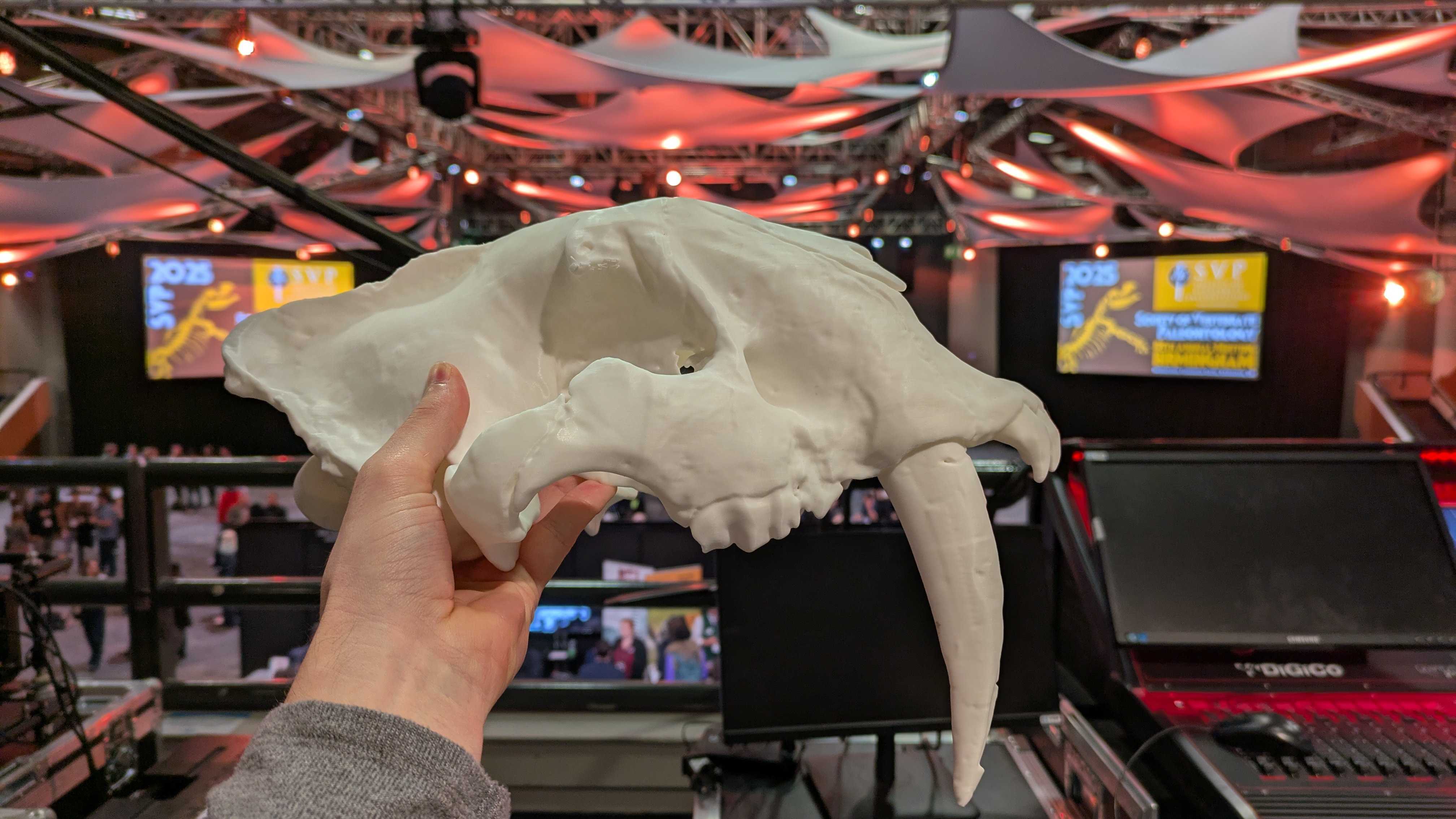
Patrick here, reporting live from the Society of Vertebrate Paleontology 85th Annual Meeting (SVP 2025) in sunny old Birmingham, England (it’s raining).
Scientists from around the world have gathered for the conference, which covers all things paleontology. I’ve been listening to dinosaur talks for most of the morning, during which researchers have presented new and recently published findings, including one on the oldest-known dome-headed dinosaur.
But it’s not all about dinosaurs. Here’s a picture of a saber-toothed skull model from upcoming research (currently super secret).

Patrick Pester
Live Science roundup
Here’s a roundup of all the stories Live Science has published so far (that we haven’t already mentioned).
JWST finds the first stars
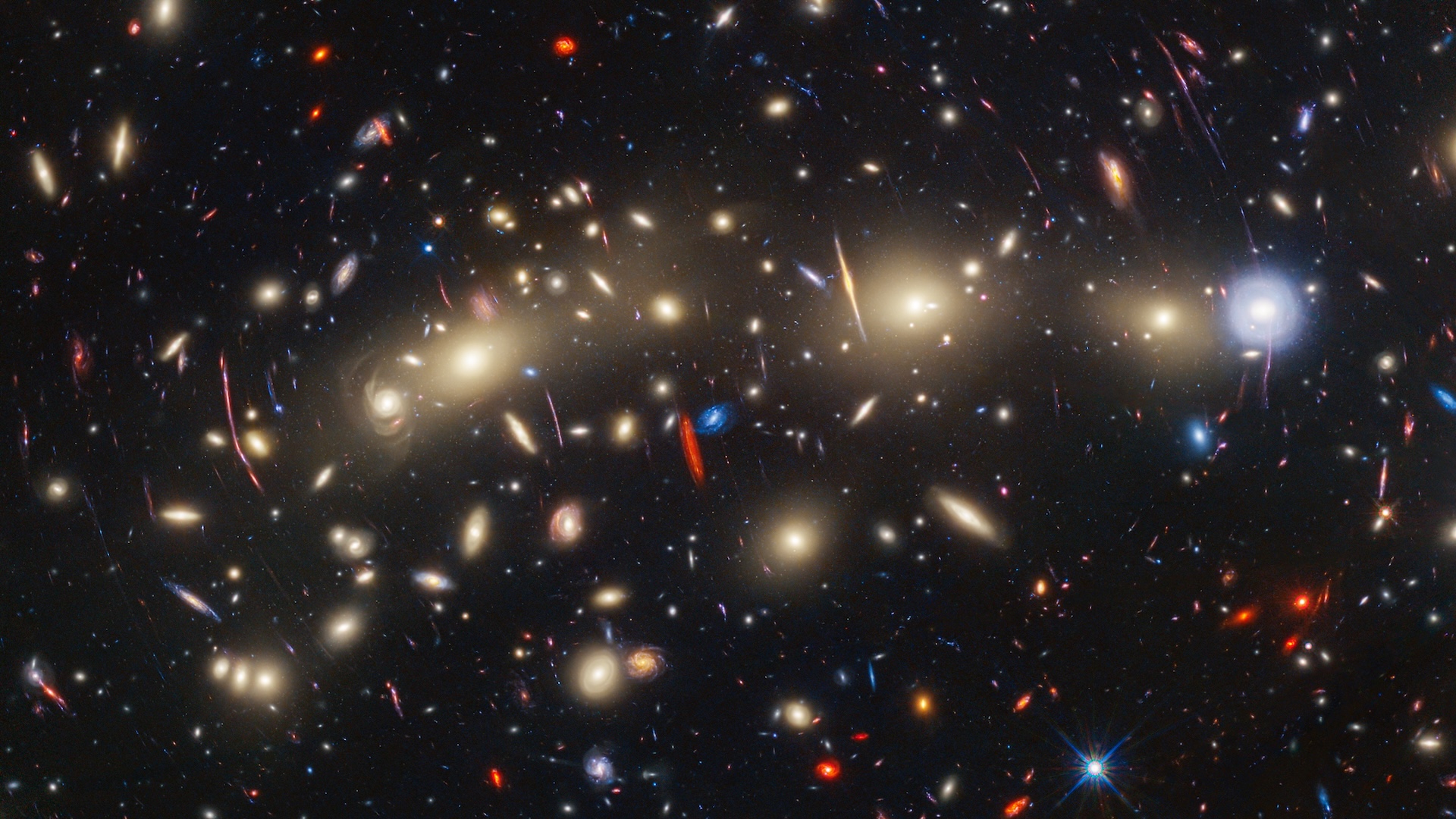
Astronomers using the James Webb Space Telescope (JWST) may have finally captured faint glimmers of light from the universe’s very first stars. Known as Population III, or dark stars, they are believed to have coalesced from the first clottings of hydrogen, helium and dark matter, just a few hundred million years after the Big Bang.
Astronomers still debate over what the signals from these stars should look like, meaning this detection likely won’t be certain for some time. But if scientists keep spotting good candidates like this, they could learn some crucial insights into how the first galaxies in our universe took shape.
You can read the full story here.
Bumblebees learn to code

The internet has spent years taunting us journalists to learn to code. Now, in a shocking betrayal, scientists and bees have beat us to it.
In a first-of-its-kind study, scientists have trained bumblebees to read rudimentary Morse code signals to find sugary rewards. It demonstrates an impressive neurological capacity among insects for sensing timing, and could mean that evolution has hard-wired their tiny brains for decoding simple codes — there’s hope for journalists yet.
Comet 3I/ATLAS is blasting out radio signals. Here’s why that’s proof it’s not aliens.
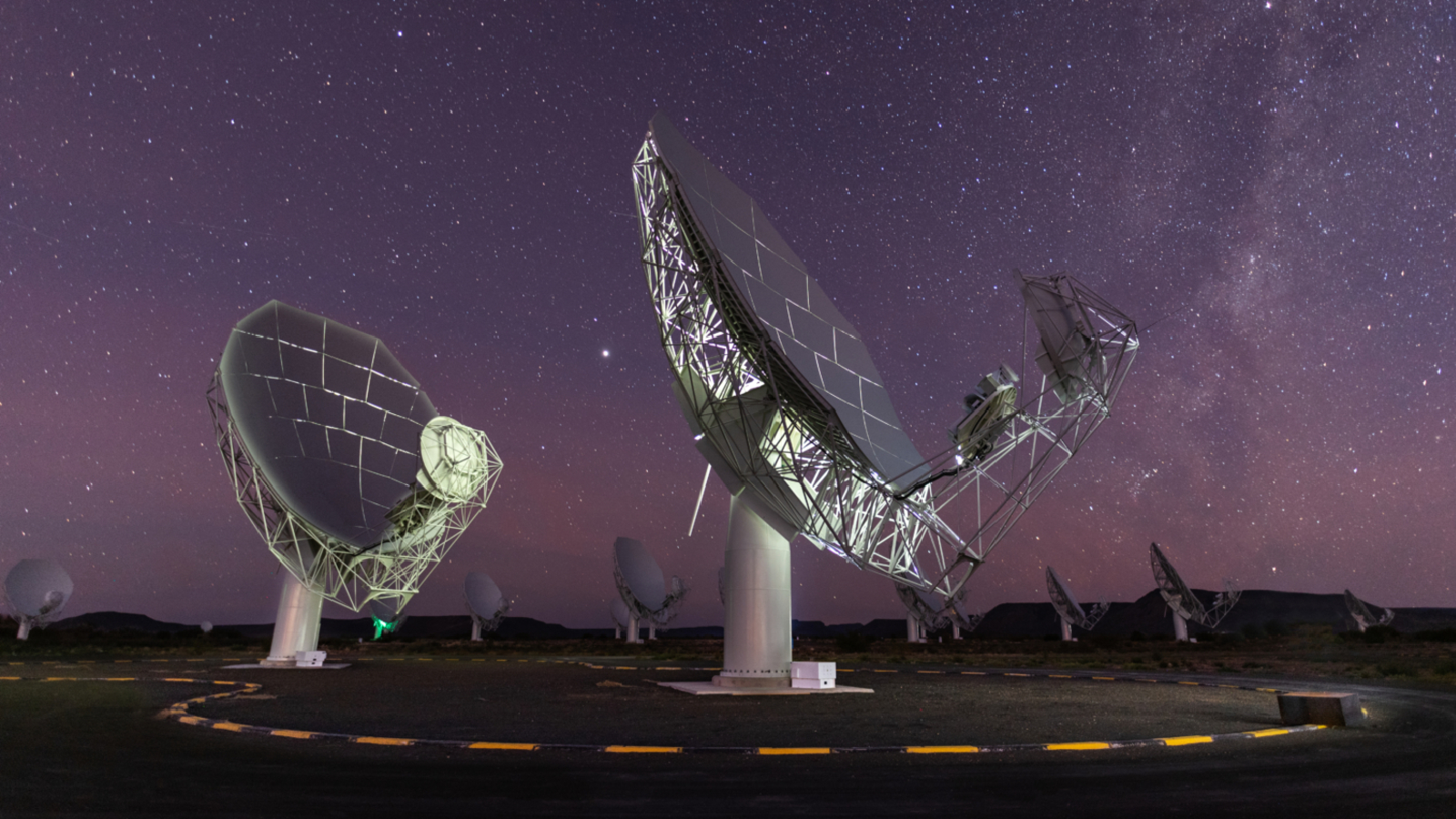
I signed off yesterday promising an update on the comet 3I/ATLAS, so here it is.
Astronomers at South Africa’s MeerKAT radio telescope have detected the first radio waves emanating from the interstellar visitor. Read that sentence alone and click away from this blog, and you might think it’s further evidence that the comet is a trojan horse stuffed to the brim with little green men.
But alas, the signal is actually further evidence that the comet is perfectly natural in its origins.
Why? Check out Senior Staff Writer Harry’s full story for the lowdown.
Auroring good time
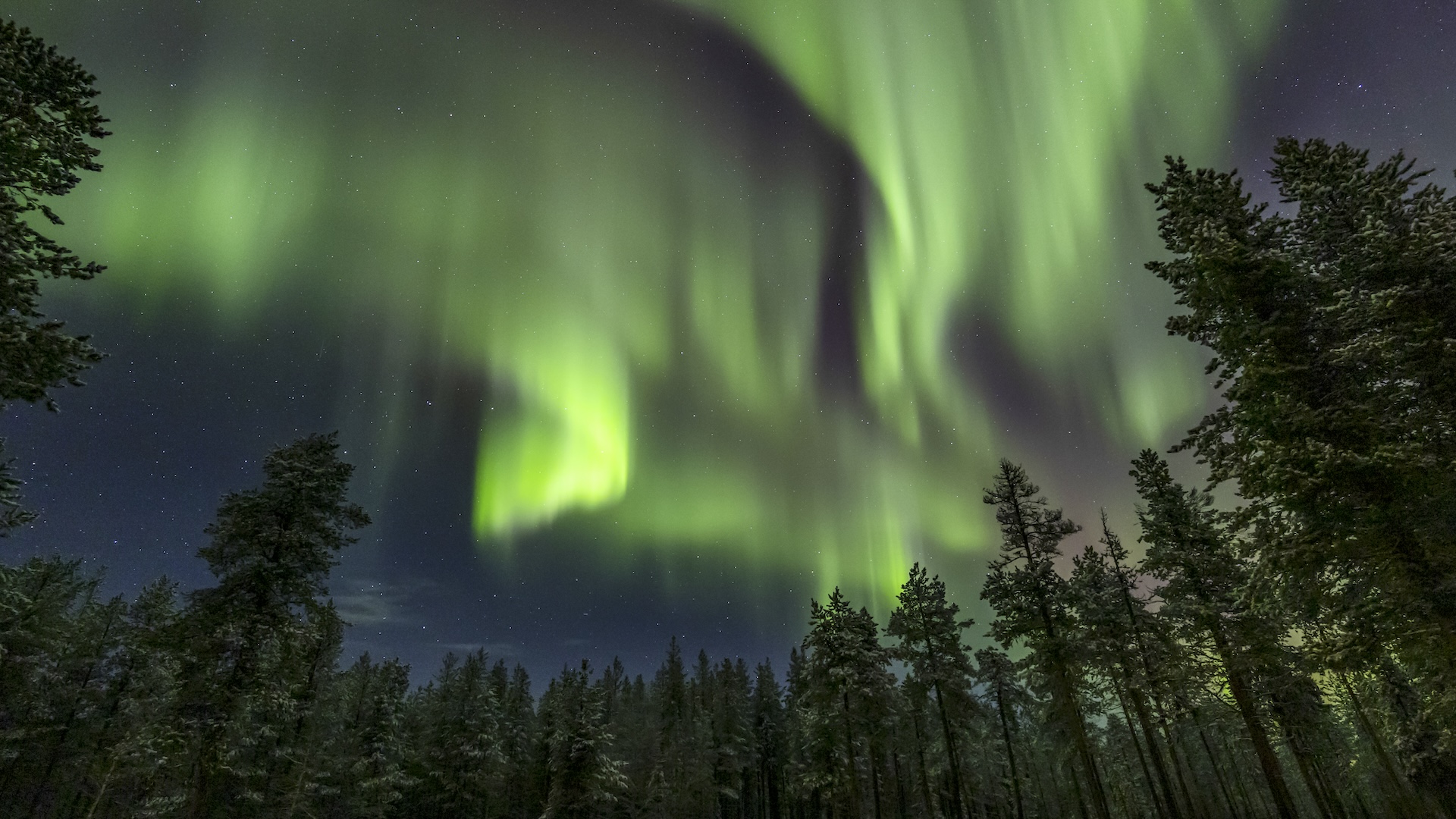
Good morning, science fans. For those of you chasing auroras all night, we hope you got some rest. We blogged about the solar eruptions barrelling into Earth’s magnetosphere here yesterday, but it turns out they were triggered by the most powerful solar flare of the year.
As three solar outbursts (or coronal mass ejections if you want to make them sound fancy) continue to spark geomagnetic storms, we’re set to see the northern lights as far south as northern California and Alabama tonight.
If you take any pictures of the lights and would like to share them with us, give us an email here. In the meantime, check out the full story here.

Ben Turner
The reports of 3I/ATLAS’s death are greatly exaggerated
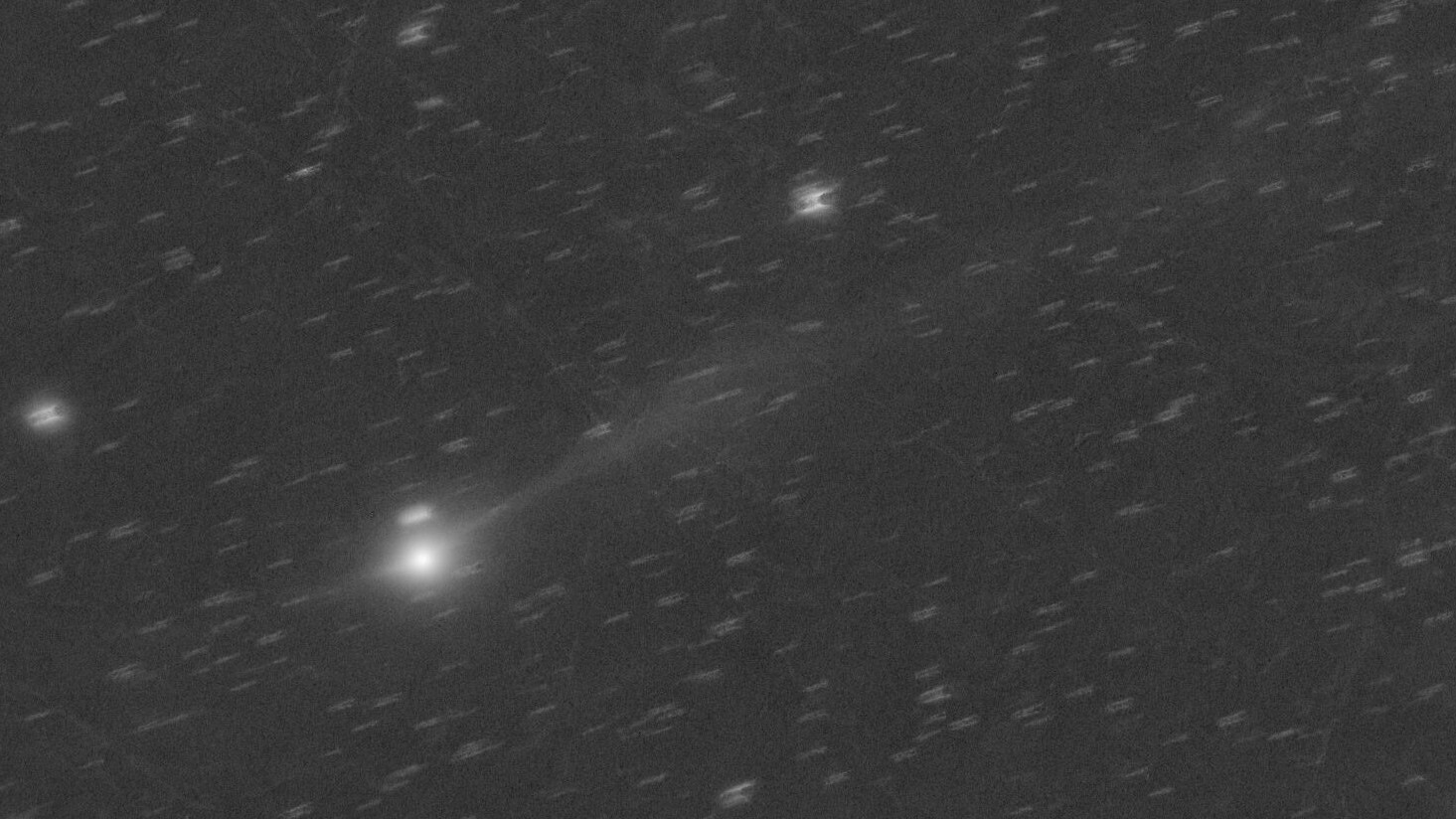
Has 3I/ATLAS exploded after a fatal near-encounter with our sun? Not at all, Patrick learned today. But that won’t stop some claiming otherwise. With the comet’s closest point to Earth coming on Dec 19. we’re readying ourselves for a long end to the year.
Read the full story here.
Manifold Destiny

On this day 22 years ago, a Russian mathematician uploaded a scientific paper to a public server that quickly sent the world loopy.
His name was Gigori Perlman, and the paper he submitted was the first of three that solved the Poincaré conjecture — a famously-intractable hypothesis made by Henri Poincaré nearly a century before.
Perlman’s contribution proved essential for topology, the mathematical study of shapes, and earned him the prestigious Fields Medal and the Clay Millenium math prize.
Yet he turned both down, and seemingly left the field permanently due to his disillusionment with the vanity of his fellow mathematicians. When a reporter attempted to contact him in 2010 he responded: “You are disturbing me. I am picking mushrooms.”
You can read the full story here.
Cause for COP-timism

Climate deliberations continue at this year’s COP 30 conference in Belem, Brazil, in spite of some notable absences that include President Donald Trump. Here’s a breakdown from Carbon Brief on what each country’s negotiators are angling for at the conference.
If all the legal wranglings over the fate of our planet feel a little dispiriting, here’s a shot of good news: China, the world’s biggest polluter, has seen its CO2 emissions flat or falling over the past 18 months, meaning it could hit its emissions peak far ahead of schedule.
Leonid meteor shower set to peak
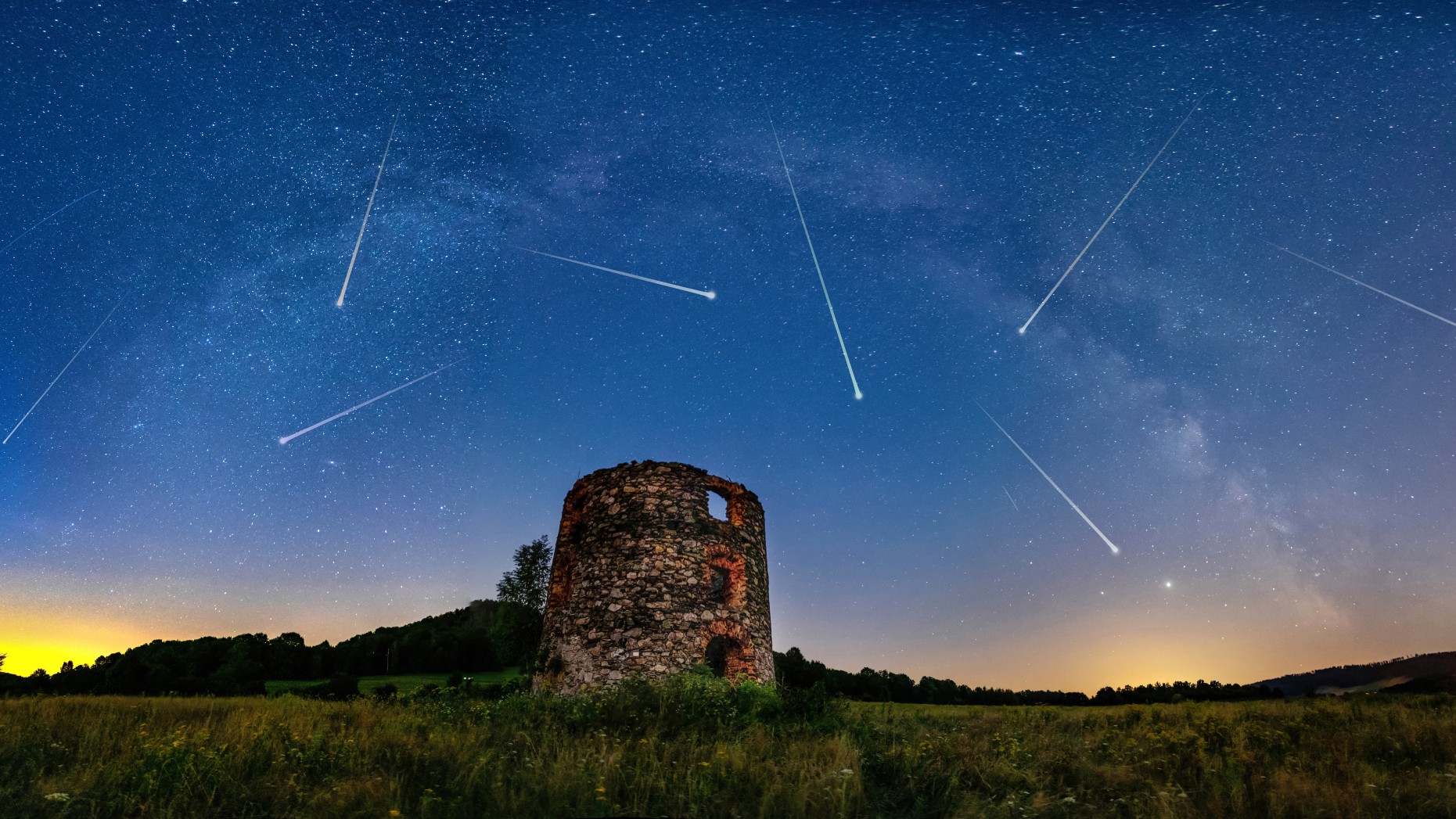
Save all your wishes for next week, when the Leonid meteor shower peaks.
The annual flurry of shooting stars will appear in the early hours of Monday (Nov. 17), and is produced by tiny particles from the Comet 55P/Tempel-Tuttle that burn up in Earth’s atmosphere to make meteors.
This year could offer one of the best viewing windows for the fast-moving shower, owing to a nearly moonless night.
You can read the full story here.

Ben Turner
Live Science roundup
—For the first time, physicists peer inside the nucleus of a molecule using electrons as a probe
—This week’s Leonid meteor shower could be one of the best in years. Here’s why.
—Prehistoric Jomon people in Japan had ‘little to no’ DNA from the mysterious Denisovans, study finds

Patrick Pester
Cannibal solar storm on its way

What’s more exciting than one coronal mass ejection? One eating the other, of course.
Coronal mass ejections (CMEs) are large, fast-moving clouds of magnetized plasma that occasionally get spat out into space by the sun alongside solar flares — powerful explosions on our star’s surface triggered when solar magnetic loops snap in half like an overstretched elastic band.
A cannibal CME is created when one CME is followed, and swallowed, by a second faster one to create a single, massive wave of plasma.
That’s what could happen this Wednesday (Nov. 12) according to Spaceweather.com, as two CMEs are on their way to Earth right now. They will likely bring a strong geomagnetic storm and auroras above our skies.
Running AMOC
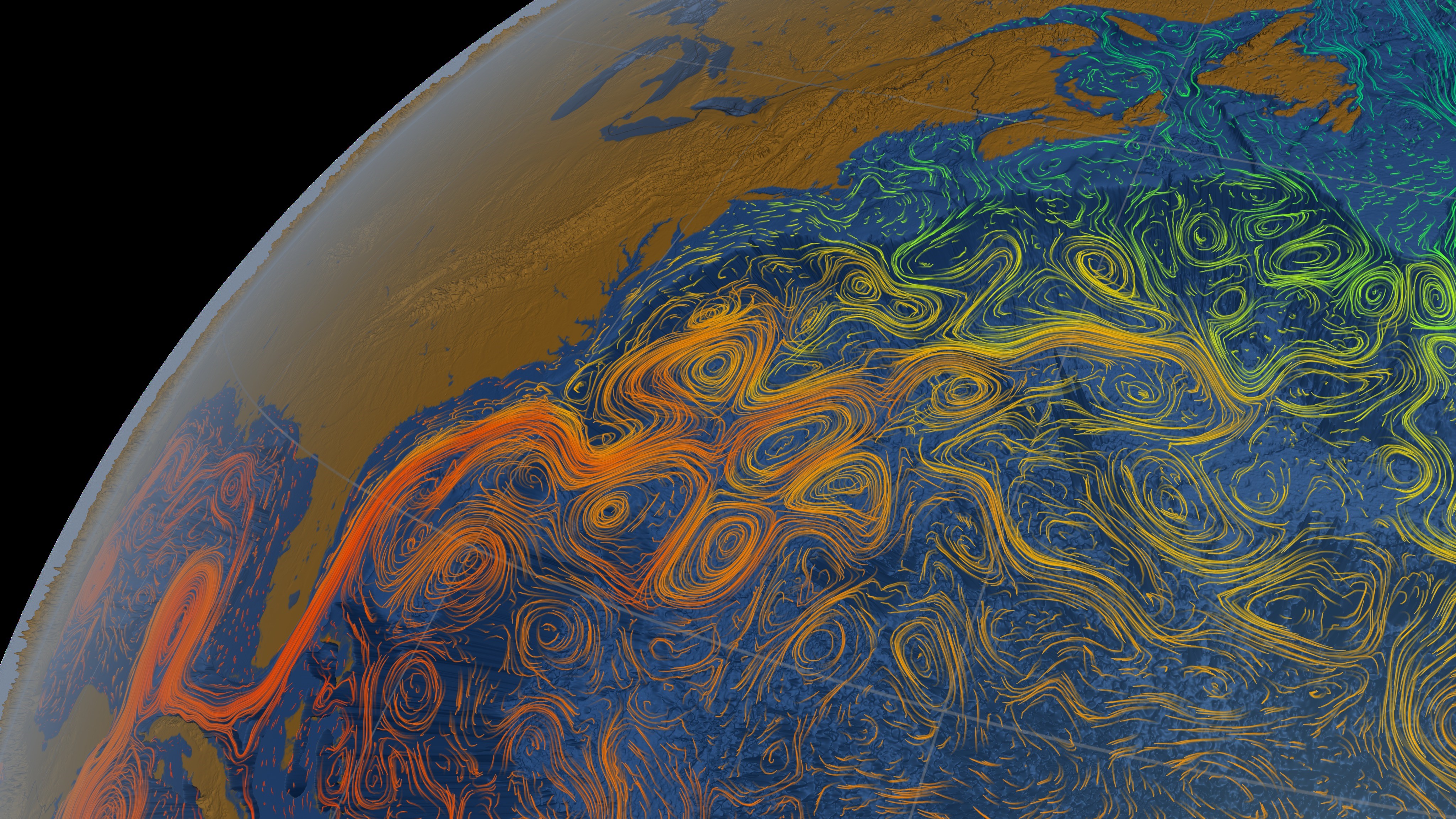
It’s a simple rule that as you get further away from the equator, your climate gets colder.
Yet not everywhere follows this trend. Take Western Europe for example: New York City and Madrid lie along roughly the same latitude, yet Madrid’s average January temperatures are ten degrees Fahrenheit (5.6 Celsius) hotter than those of the Big Apple.
So what gives? The answer lies in a web of warm ocean currents called the Atlantic Meridional Overturning Circulation (AMOC) that sustains Europe’s high temperatures, yet is showing troubling signs of weakening and even collapse sometime this century.
You can read the full story here.
New Comet approaches
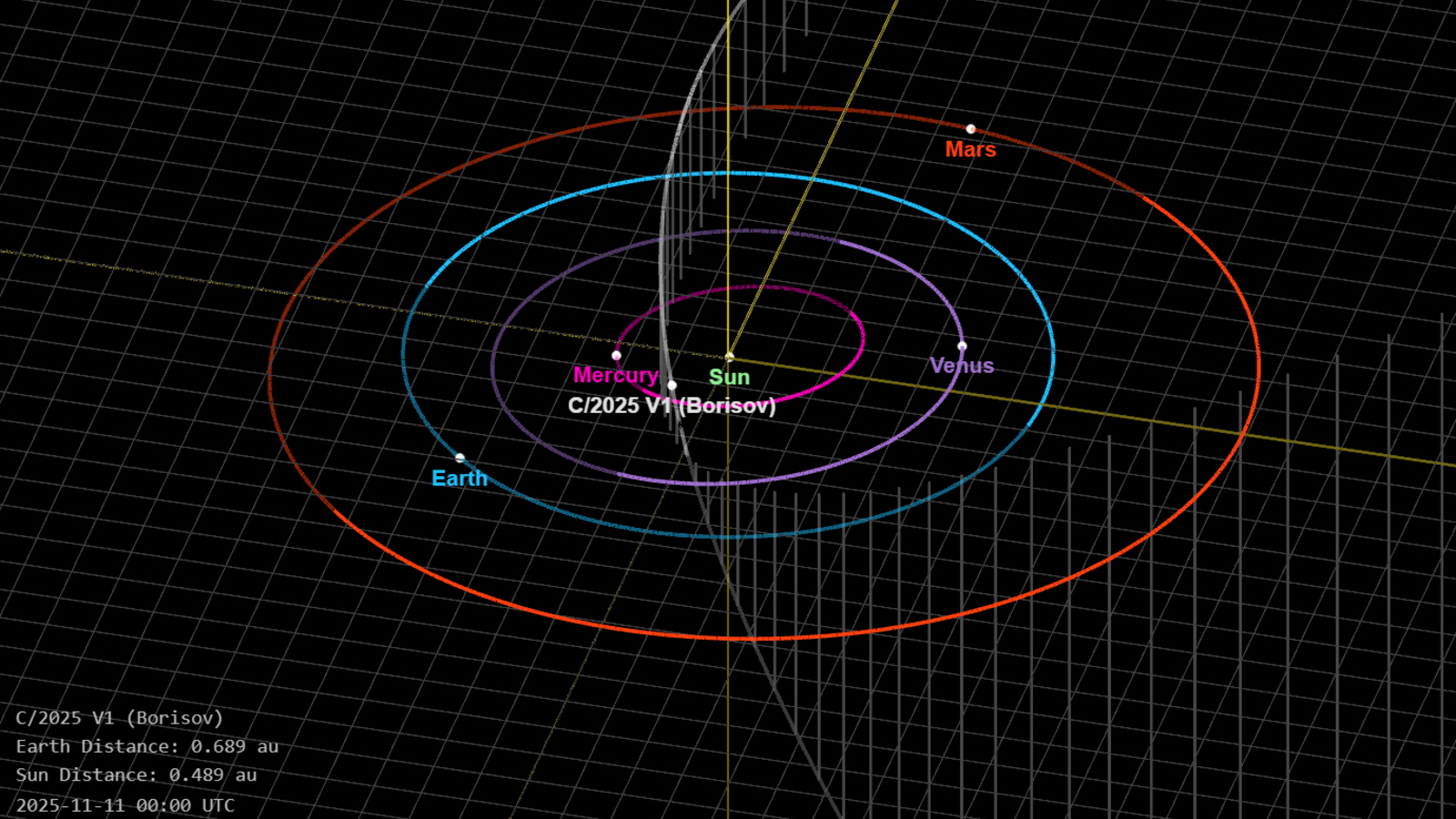
Good morning, science fans! We’re back again with fresh comet news, this time relating to a new space snowball. Before you ask, it’s not Comet 3I/ATLAS (although we are working on an update on that too).
Called C/2025 V1 (Borisov), this new comet has a high eccentricity, a vanishing tail and is due its closest flyby of Earth today. Unlike 3I/ATLAS, C/2025 V1 does not come from interstellar space, but is believed to originate from the Oort cloud — the icy sphere of debris that surrounds our solar system.
You can read the full story here.

Ben Turner
Canada loses its measles elimination status

Hi everyone, it’s Nicoletta, Live Science’s Health Editor, here with an update that Canada has just lost its measles elimination status. Measles has been spreading consistently in Canada for over a year, resulting in the announcement made today by health officials.
Measles can be deadly: it kills between 1 and 3 out of every 1,000 children infected. But even those who survive the infection can suffer long-term consequences, from “immune amnesia” to permanent brain damage to a rare progressive condition that puts them into a coma from which they never awake.
The good thing is that we have extremely effective vaccines for measles that prevent both the infection itself and its dangerous knock-on effects. The bad thing is that rates of routine measles vaccinations are trending down, and as a predictable consequence, cases of measles are going up.
Canada’s announcement is a reflection of this global trend, which is being driven both by rising anti-vaccine sentiment and by disruptions to routine childhood vaccination triggered by the COVID-19 pandemic, among other factors. The United States has also seen persistent declines in routine vaccination in recent years, and in turn, large outbreaks of measles, raising questions about the stability of its own measles elimination status.
At the end of the day, the takeaway is that measles is a highly preventable illness that causes a great deal of suffering when it’s allowed to take hold. The measles vaccine represents a triumph of medical science that helped drive down the staggering rate of child death that existed prior to its introduction. Declines in measles vaccination signal a return to a time when a lot more kids died in early childhood than do today — and that, in a word, is concerning.
Read the full story here.

Nicoletta Lanese
New ‘almost interstellar’ comet approaches Earth

Hello! Senior Staff Writer Harry Baker here. I’ve been covering the infamous alien comet 3I/ATLAS a lot since it was first discovered in early July, so I was surprised to hear of a new “almost interstellar object” that is due to make its closest approach to Earth tomorrow (Nov. 11), especially when some people were speculating that it could be an alien probe.
For the record, this newly discovered comet, dubbed C/2025 V1 (Borisov), is definitely NOT an interstellar object (ISO). But it does share a few similarities with 3I/ATLAS, including a high eccentricity and a vanishing tail. As for it being an alien spacecraft, even renowned alien-hunter Avi Loeb — who has been promoting this theory for months — says that it is unlikely.
And in a completely unrelated coincidence, the new comet was discovered by Gennadiy Borisov, who also discovered the second-ever ISO and 3I/ATLAS’s predecessor “Comet Borisov” in 2019.
Check out the full story here.
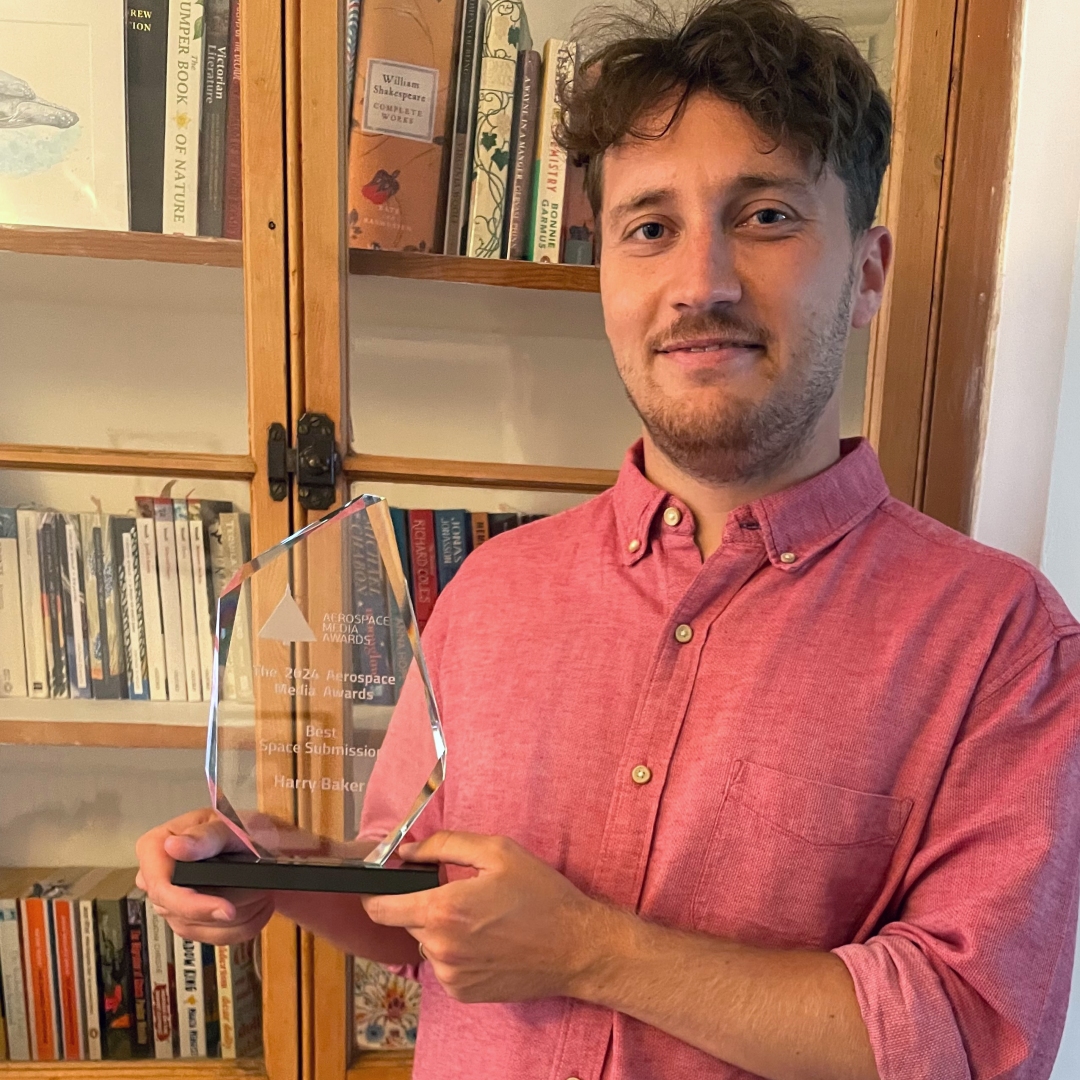
Harry Baker
Cosmically, we may have already peaked
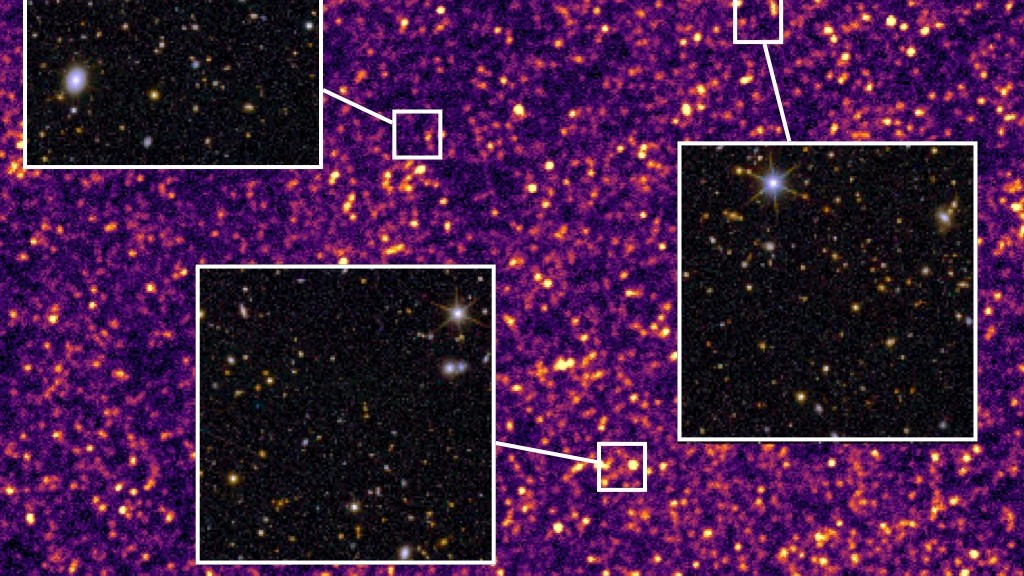
It’s good to be in something from the ground floor, but humanity may have come too late for that. Or that’s at least the latest from the Euclid and Herschel telescopes, which have found that star formation has already peaked in our cosmos.
By taking the most comprehensive temperature reading of our universe yet, the space telescopes revealed that galaxies have grown slightly cooler as their star formation rates eased off over the past 10 billion years.
That means that our universe is on course to becoming totally quenched. But before any of us spiral into existential crisis, it won’t be for an unimaginably long time. In the meantime, we can all get therapy, or maybe just feed the ducks.
You can read the full story here.
Comet sense?
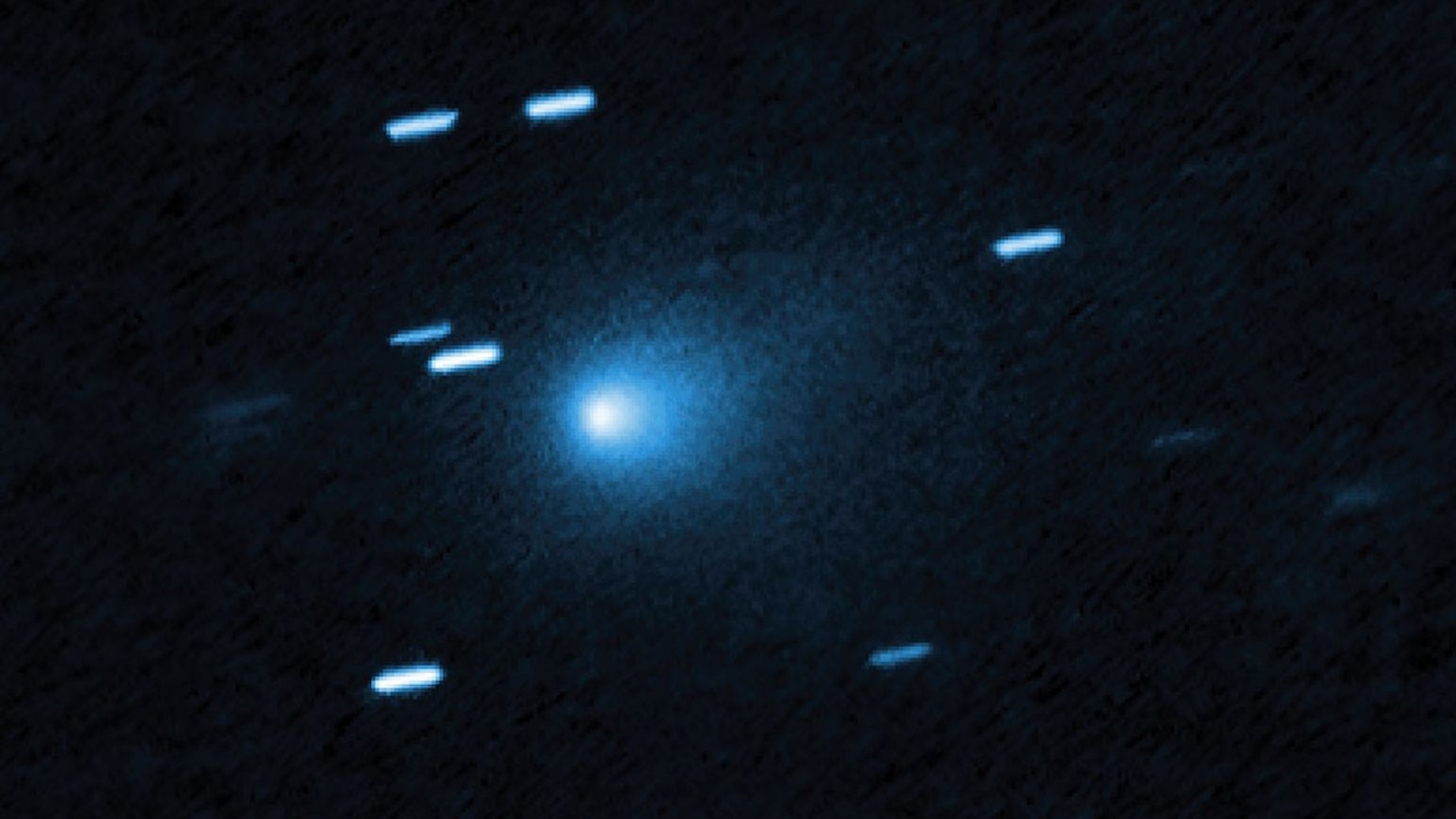
Seems like pretty much everyone wants fresh updates on Comet 3I/ATLAS these days.
Our solar system’s third-ever recorded interstellar visitor is fascinating — at more than 7 billion years old it’s so irradiated that we may never be able to pin down exactly where it came from. But the question on everyone’s lips, and in our inboxes, is whether or not it’s an alien probe.
I’d really love to tell you otherwise, but the answer from most scientists is no, almost definitely not.
You don’t have to take that from me, though. Here’s an article by radio astronomer Laura Driessen on why extraterrestrial speculation is the least interesting question about this truly strange comet.
You can give the story a read here.

Ben Turner
COP30 kicks off

The opening ceremony of COP30 has wrapped up in Belém, Brazil. You can watch it here. It wasn’t like an Olympic opening ceremony or anything like that — not one singing headless Marie Antoinette in sight. Still, there were a couple of impassioned speeches and traditional musical performances.
Most importantly, this year’s major climate conference is officially underway. Simon Stiell, the UN Climate Change Executive Secretary, highlighted the progress humanity had made since the signing of the Paris Agreement 10 years ago at COP21, during which world leaders promised to limit global warming to preferably below 1.5 degrees Celsius (2.7 degrees Fahrenheit) and well below 2 C (3.6 F). However, as the UN announced last week, we’re still expected to overshoot the 1.5 C target.
“We must move much, much, faster on both reductions of emissions and strengthening resilience,” Stiell said. “The science is clear: we can and must bring temperatures back down to 1.5C after any temporary overshoot. Lamenting is not a strategy. We need solutions.”
Stiell will be looking for countries to collaborate on those solutions this week, but as Ben noted this morning, many leaders are no-showing this year’s conference. Among the notable absentees are President Donald Trump, China’s Xi Jinping and India’s Narendra Modi — the heads of the three biggest emitting countries.
In case you missed it
—Ram-shaped teapot from ancient Canaanite cult discovered near ancient city of Armageddon
A very interesting teapot.
—Antibiotic found hiding in plain sight could treat dangerous infections, early study find
Scientists have discovered a new antibiotic compound that shows promising activity against drug-resistant infections, so that’s good.
—NASA’s ultraquiet supersonic ‘flying swordfish’ makes history with first test flight
NASA has unveiled an experimental supersonic plane that looks like a swordfish. Swordfish are among the fastest animals in the ocean, but their commonly cited swimming speeds are very unreliable. NASA’s new plane reached a top speed of about 240 miles per hour (386 kilometers per hour).
A terrifying, but potentially very useful, walking chair.
—How to watch ‘Kingdom’ — TV and streaming details for David Attenborough’s new BBC series
New nature series narrated by the 99-year-old Sir David Attenborough.

Patrick Pester
Mysterious Andean holes explained

Some 5,200 holes sit in ordered grids along southern Peru’s Serpent Mountain, many of them dating back more than a thousand years. So what could explain them? Long-forgotten rituals? Fog capture technology? Human sacrifices? Aliens?
A new suggestion made by archaeologists posits that the real answer isn’t quite that exciting (although it’s still pretty cool): The holes were likely used as accountancy tools in barter markets for goods along trade routes.
You can read the full story here.
Giza break

Two voids found on the eastern side of Egypt’s Pyramid of Menkaure could point to a second entrance to the ancient tomb, tests that used electrical currents and ultrasonic waves have hinted.
You can check out the full story here.
The weekend’s biggest news
We can’t always bring you breaking science news as it happens — sometimes our loved ones, days off and sleep schedules get in the way. Here’s some of the biggest science news that happened over the weekend:
- A powerful 6.9 magnitude earthquake rattled the northern coast of Japan on Sunday (Nov. 9). Thankfully, there have been no immediate reports of injuries or damage, no abnormalities at the two nuclear power plants in the area, and a tsunami warning following the quake was downgraded.
- Health officials are investigating 13 cases of infant botulism across 10 states linked to a recalled baby formula.
- Blue Origin’s New Glenn rocket was scheduled for launch on Sunday (Nov. 9) but it has been delayed until Wednesday (Nov. 12) due to poor weather conditions. The launch will be the first big test for the rocket’s first NASA mission, and a statement of intent for the company’s founder Jeff Bezos against competitor SpaceX.
Monkey business is closed

Two weeks ago, Patrick covered news of several lab monkeys that escaped from an overturned truck in Mississippi that were allegedly diseased and dangerous.
On Friday night, we finally got news that the last of these monkeys has been tracked down following a report from a resident whose dog alerted her to its presence. Five of the escaped rhesus macaques were sadly killed by police, yet authorities say that this monkey was “successfully recovered.”
Good COP, bad COP

Good morning, science fans! Ben here, back for another round of updates on the latest science updates from around the world.
While we’re speaking of the pale blue dot that we call home, it’s in a spot of trouble due to human-caused climate change, as it speeds toward near-certain overshoot of climatic guard-rails set by 2015’s Paris Agreement. That’s why delegations from 194 countries are meeting in Brazil for the UN’s COP30 conference, making yet another attempt to forge better plans to stay within the agreement’s limits and phase out fossil fuels.
This year’s conference promises to be particularly contentious, with many leaders being no-shows and the Trump administration having exited the process entirely.
Where that leaves this conference is entirely unclear: Brazil insists that this year’s conference will be one of “implementation”, whereby countries focus on what they can contribute toward real-world impacts instead of striving toward longwinded, often defanged, consensus. Whether that means some countries can get away with contributing very little, and what can be done to counteract this, remains unclear.

Ben Turner

